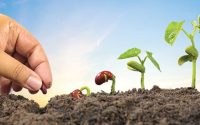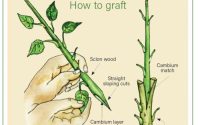Part of Plant That Contains Seed The Fruit
Defining the Structure: The Fruit
Part of plant that contains seed – The fruit, a botanical marvel, is the mature ovary of a flowering plant, a vessel meticulously crafted to protect and disperse the seeds it contains. This seemingly simple structure exhibits remarkable diversity, reflecting the myriad strategies plants have evolved for survival and propagation. Its form, texture, and composition are intimately linked to the methods employed for seed dissemination, a crucial stage in the plant’s life cycle.The role of the fruit extends far beyond mere seed containment.
It acts as a vital bridge between the plant’s reproductive phase and the establishment of the next generation. Through its structure and properties, the fruit actively participates in seed dispersal, ensuring the survival and spread of the species. This process, crucial for avoiding competition and colonizing new habitats, is intricately intertwined with the fruit’s characteristics.
Fruit Types and Seed Dispersal Mechanisms
Fruits are categorized based on their structure and development, reflecting the diverse mechanisms they employ for seed dispersal. Simple fruits develop from a single ovary, while aggregate fruits arise from multiple ovaries within a single flower. Multiple fruits, on the other hand, result from the fusion of ovaries from multiple flowers. Each type employs unique strategies for distributing seeds, often leveraging external agents such as wind, water, or animals.
Examples of Fruit Structures and Seed Distribution
The number and arrangement of seeds within a fruit are highly variable, reflecting adaptations to specific dispersal methods. For instance, wind-dispersed fruits often contain numerous small, lightweight seeds, while animal-dispersed fruits may contain fewer, larger seeds encased in nutritious pulp.
| Fruit Type | Seed Number | Seed Dispersal Method | Example Plant |
|---|---|---|---|
| Berry (Simple) | Numerous, small | Animal consumption (endozoochory) | Tomato (Solanum lycopersicum) |
| Achene (Simple) | One | Wind dispersal (anemochory) | Sunflower (Helianthus annuus) |
| Pome (Simple) | Numerous, small | Animal consumption (endozoochory) | Apple (Malus domestica) |
| Legume (Simple) | Many | Dehiscence (explosive dispersal) | Pea (Pisum sativum) |
Seed Development within the Fruit
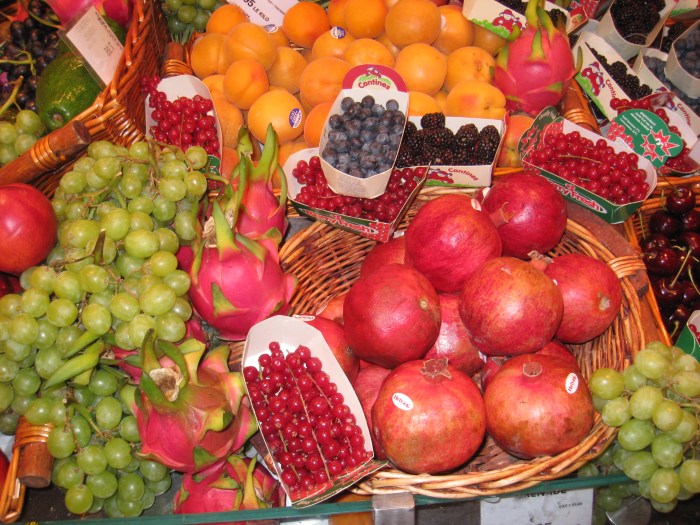
From the delicate dance of pollination to the robust maturity of a fully formed seed, a remarkable transformation unfolds within the protective embrace of the fruit. This journey, a testament to nature’s artistry, involves a complex interplay of genetic programming, hormonal signals, and environmental cues, resulting in the creation of a new generation, ready to perpetuate the cycle of life.
The process is not uniform across all plant species, varying subtly yet significantly depending on the type of fruit and the specific plant involved.The genesis of a seed begins with pollination, the transfer of pollen from the anther to the stigma of a flower. This initiates a cascade of events leading to fertilization, the fusion of male and female gametes.
Once fertilized, the ovule, residing within the ovary, embarks on its transformation into a seed. The ovary itself, responding to hormonal changes, begins its metamorphosis into the fruit, a protective vessel nurturing the developing seeds within. This intricate process is driven by a complex interplay of plant hormones, ensuring the coordinated development of both seed and fruit.
Nutritional Changes During Seed Development
The developing seed undergoes profound nutritional changes throughout its maturation. Initially, the embryo, a miniature plant in its nascent stage, relies heavily on the endosperm, a nutritive tissue rich in carbohydrates, proteins, and lipids. These nutrients, initially derived from the parent plant, fuel the embryo’s rapid growth and development. As the seed matures, the endosperm may be gradually absorbed by the growing embryo, transferring its vital reserves to support the embryo’s increasing demands.
In some seeds, such as those of beans, the cotyledons (embryonic leaves) become the primary storage organs, accumulating substantial reserves of nutrients. The accumulation of these reserves is crucial for the seed’s survival during dormancy and for the successful germination and establishment of the seedling upon encountering favorable conditions. The composition of these reserves varies considerably across different plant species, reflecting the diverse strategies employed by plants to ensure the survival and success of their offspring.
For example, some seeds are rich in oils (like sunflower seeds), others in starches (like corn kernels), and still others in proteins (like soybeans).
Seed Development in Different Fruit Types
The development of seeds differs across various fruit types. Consider the contrast between a fleshy berry, such as a tomato, and a dry fruit like a pea pod. In the tomato, the seeds develop within a succulent, fleshy fruit, receiving ample hydration and nutrients from the surrounding tissue. The development is relatively slow and prolonged, allowing for substantial nutrient accumulation within the seeds.
In contrast, the seeds of a pea pod develop within a dry fruit, characterized by less readily available water. The development process is often faster, with the seeds relying more heavily on the initial resources provided by the parent plant. Further differences arise in seed dispersal mechanisms. Fleshy fruits often rely on animals for seed dispersal, while dry fruits may utilize wind or ballistic mechanisms.
These differences in fruit type and dispersal strategy reflect diverse evolutionary adaptations to specific environmental conditions and ecological niches. The variations in seed development highlight the remarkable adaptability of plants to a wide range of environmental challenges.
Seed Protection and Germination
The journey of a seed, from its tender beginnings nestled within the protective embrace of the fruit, to its triumphant emergence as a seedling, is a testament to nature’s ingenious design. Fruits, far from being mere vessels, are sophisticated structures evolved to safeguard the precious cargo within and orchestrate its successful germination. Their diverse forms and adaptations reflect the myriad challenges faced by seeds in their quest for survival.The intricate architecture of fruits provides a multi-layered defense system for the developing seeds.
This protection extends from physical barriers shielding against harsh environmental conditions to chemical defenses deterring seed predators. Furthermore, fruits actively participate in the germination process, providing crucial resources and signals that trigger the awakening of the dormant embryo.
Fruit Structures and Seed Protection
Fruits employ a variety of structural adaptations to protect their seeds from environmental damage, including desiccation, temperature fluctuations, and predation. These adaptations vary widely depending on the species and its environment.
Consider the hard, woody shell of a coconut, effectively protecting the seed from the saltwater immersion and impacts of ocean currents. Alternatively, the fleshy pulp of a berry provides a moist environment, preventing desiccation, while often containing chemicals that deter herbivores. The tough outer rind of a watermelon similarly protects the seeds from physical damage and dehydration. The spiny exterior of some fruits acts as a deterrent against animals.
Fruit Mechanisms Facilitating Seed Germination
The fruit doesn’t merely protect the seed; it also plays a crucial role in initiating germination. Many fruits contain stored nutrients within their tissues, providing the developing seedling with the energy it needs to establish itself. The breakdown of fruit tissue, as it decays, also releases nutrients into the surrounding soil, enriching the environment for the germinating seed. Some fruits even contain growth hormones or other chemicals that stimulate seed germination.
The process of fruit ripening, often involving changes in texture and chemical composition, is intrinsically linked to the readiness of the seed for germination.
Diagram of a Fruit and its Roles in Seed Protection and Dispersal
Imagine a cross-section of a typical fleshy fruit, such as a tomato.
A diagram would depict the following:
- Exocarp (Skin): The outermost layer, often tough and waxy, providing a physical barrier against desiccation, mechanical damage, and pathogens. It may be brightly colored to attract seed dispersers.
- Mesocarp (Flesh): The middle layer, typically fleshy and juicy in fleshy fruits, offering protection and a reservoir of nutrients for the developing seed and the germinating seedling. Its sweetness and aroma attract animals for seed dispersal.
- Endocarp (Innermost Layer): This layer surrounds the seed(s), sometimes forming a hard shell (like in a drupe) for additional protection, or a soft pulp (like in a berry) providing nourishment.
- Seeds: The reproductive units containing the embryo, endosperm (food store), and seed coat. The seed coat protects the embryo from physical damage and desiccation.
Seed Structure and Composition
Within the seemingly humble seed lies a universe of complexity, a miniature blueprint for a future plant. A testament to nature’s ingenuity, the seed’s structure and composition are finely tuned to ensure survival and successful propagation, a story etched in its very being. Understanding this intricate design unveils the secrets of plant life and the remarkable journey from seed to seedling.
The seed, a marvel of biological engineering, is composed of several key components working in perfect harmony. At its core resides the embryo, the nascent plant itself, containing the rudimentary root (radicle) and shoot (plumule). Surrounding the embryo is the endosperm, a nutritive tissue rich in stored carbohydrates, proteins, and lipids, providing the energy for germination and early growth.
Protecting this precious cargo is the seed coat (testa), a tough outer layer offering defense against environmental stressors, such as desiccation, mechanical damage, and microbial attack. This protective barrier ensures the embryo’s viability until conditions are favorable for germination.
Seed Structure Across Plant Families
A comparative analysis of seed structure reveals the remarkable diversity across different plant families, reflecting adaptations to their specific environments and reproductive strategies. The following table illustrates some of this variation:
| Plant Family | Seed Coat Characteristics | Endosperm Type | Embryo Structure |
|---|---|---|---|
| Fabaceae (Legumes) | Thick, often hard and impermeable; sometimes brightly colored | Usually absent or reduced; cotyledons store reserves | Two large cotyledons (seed leaves) containing stored food |
| Poaceae (Grasses) | Thin, membranous or papery | Large, starchy endosperm | Small embryo with a single cotyledon (scutellum) |
| Asteraceae (Compositae) | Variable; often hairy or pappus-like structures for dispersal | Variable; often present but can be reduced | Small embryo with two cotyledons |
| Cucurbitaceae (Gourds) | Hard and woody | Abundant, fleshy endosperm | Large embryo with two cotyledons |
Seed Chemical Composition and Nutritional Value
Seeds are nutritional powerhouses, packed with essential nutrients vital for both plant growth and human consumption. Their chemical composition varies depending on the species, but generally includes a significant proportion of carbohydrates, proteins, and fats. Carbohydrates, primarily in the form of starch, provide the primary energy source for germination and early growth. Proteins, essential for building new tissues, are composed of amino acids, with some seeds offering a complete profile of all essential amino acids.
Fats, predominantly unsaturated, provide concentrated energy and are crucial for membrane structure and function. Furthermore, seeds are rich sources of vitamins and minerals, including various B vitamins, vitamin E, iron, zinc, and magnesium. For instance, sunflower seeds are a good source of vitamin E and selenium, while lentils provide significant amounts of protein and fiber. The nutritional value of seeds underscores their importance as a staple food source globally and highlights their role in maintaining human health.
Seed Dispersal Mechanisms
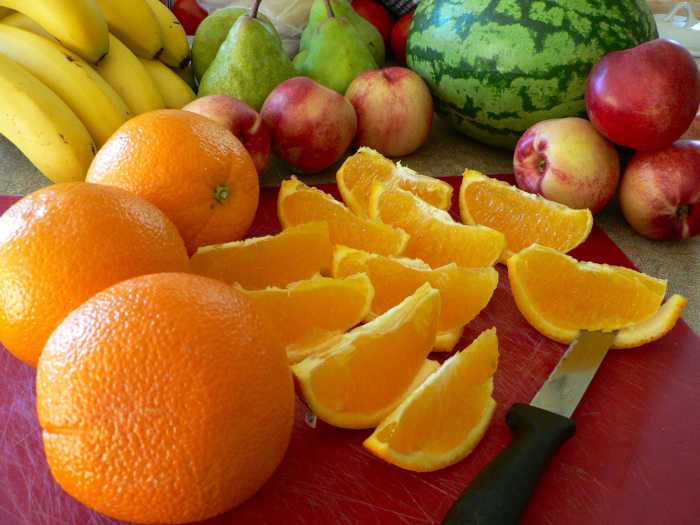
The journey of a seed from its parent plant to a new location, a vital step in the perpetuation of plant life, is orchestrated by a remarkable array of dispersal mechanisms. These methods, honed by evolution, ensure the survival and spread of plant species across diverse landscapes, minimizing competition and maximizing chances of successful germination. The ingenuity of nature in this regard is truly awe-inspiring.Seed dispersal strategies are diverse, reflecting the remarkable adaptability of plants to their environments.
The three primary modes – wind dispersal, water dispersal, and animal dispersal – each showcase unique adaptations in seed and fruit structure. Beyond these, there are also ballistic dispersal mechanisms, where the plant itself propels the seeds.
Wind Dispersal
Wind dispersal, or anemochory, relies on lightweight seeds or fruits equipped with structures that catch the wind. Dandelion seeds, for example, possess delicate, parachute-like pappi that allow them to float on even the gentlest breeze, carrying them considerable distances. Maple tree samaras, with their characteristic wing-like structures, exhibit a similar strategy, their spinning descent maximizing air time and dispersal range.
The fruit is the part of a plant that contains the seed, protecting it until it’s ready to sprout. Thinking about planting a tree? Check out this fun plant a tree cartoon for inspiration! Understanding how seeds are dispersed, often within the fruit, is key to appreciating the life cycle of plants and how seeds eventually become new plants.
Other examples include the feathery seeds of willows and the tiny, dust-like seeds of orchids. These adaptations highlight the elegant simplicity and effectiveness of wind as a dispersal vector.
Water Dispersal
Hydrochory, or water dispersal, is a common strategy for plants inhabiting aquatic or riparian environments. Coconuts, with their buoyant fibrous husks, are prime examples, capable of traveling vast distances across oceans. Many other plants produce seeds with air pockets or waterproof coatings that allow them to float, enabling dispersal by rivers, streams, and even rainfall. The seeds of water lilies, for instance, are adapted to float on the water’s surface, gradually drifting to new locations.
This method is particularly effective in distributing seeds across large bodies of water.
Animal Dispersal
Zoochory, or animal dispersal, is a sophisticated strategy that often involves enticing animals to consume fruits and subsequently disperse the seeds. Fruits adapted for this purpose are typically brightly colored, fleshy, and nutritious, attracting birds, mammals, and other animals. The seeds themselves often possess tough coats that protect them from digestion, allowing them to pass through the animal’s digestive tract unharmed and deposited in a new location, often with a dose of fertilizer in the form of animal dung.
A Fruit Adapted for Animal Dispersal: The Blackberry
Imagine a blackberry, plump and dark purple, almost glistening in the sunlight. Its spherical form is readily grasped by a bird or mammal. The numerous small drupelets, each containing a single seed, are tightly clustered together, forming a cohesive unit. The juicy, sweet flesh is highly palatable, enticing animals to consume the fruit. The seeds, encased within the drupelets, are small and hard, resisting the digestive processes of the animal.
The vibrant color of the blackberry acts as a visual beacon, advertising its ripeness and nutritional value to potential dispersers. This combination of attractive features ensures the successful dispersal of the blackberry seeds to new locations, effectively furthering the plant’s reproductive success. The tough exterior of the seed further protects it from damage during transit through the animal’s gut, ensuring its viability upon deposition.
The Relationship between Fruit and Seed Viability: Part Of Plant That Contains Seed
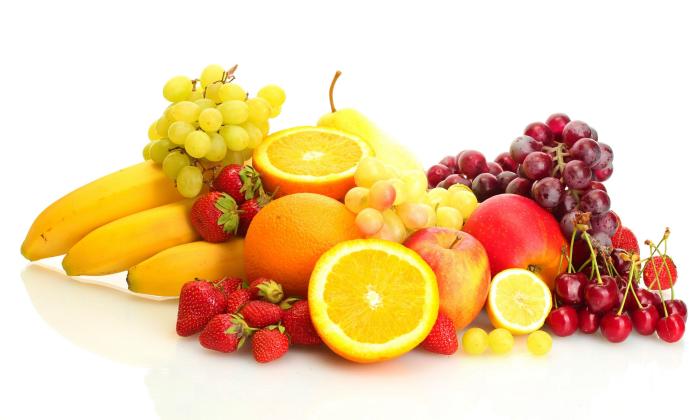
The intimate dance between fruit and seed dictates the fate of future generations of plants. The fruit, a protective cradle, profoundly influences the seed’s journey from nascent life to successful germination. This relationship, a delicate interplay of environmental factors and biological mechanisms, determines the viability and longevity of the seed, ultimately shaping the plant’s reproductive success.The longevity and viability of a seed are intricately linked to a multitude of factors, acting in concert or in opposition to influence its destiny.
These factors can be broadly categorized as intrinsic, residing within the seed itself, and extrinsic, imposed by the surrounding environment. Seed size, for example, often correlates with longevity; larger seeds, possessing greater reserves, tend to survive longer periods of dormancy. Similarly, the genetic makeup of the seed, a legacy from its parent plant, predisposes it to certain tolerances and vulnerabilities.
The level of seed maturation at dispersal also plays a crucial role; prematurely dispersed seeds often lack the necessary resources for successful germination.
Factors Affecting Seed Viability and Longevity
Seed viability, the capacity of a seed to germinate and grow, is a dynamic property, influenced by both internal and external forces. Internal factors include the seed’s genetic predisposition, its level of maturity at dispersal, and the presence of any inherent defects or damage. External factors encompass the environmental conditions surrounding the seed, such as temperature, moisture, oxygen availability, and light exposure.
For instance, seeds of desert plants often exhibit remarkable desiccation tolerance, allowing them to survive extended periods of drought, while seeds of many temperate species require specific temperature cues to break dormancy. The interaction of these internal and external forces determines the seed’s lifespan and its ultimate chance of successful germination.
Environmental Conditions and Seed Germination Rates
Different environmental conditions exert profound effects on the germination rate of seeds. Temperature, a key environmental factor, acts as a powerful regulator of germination. Each species possesses an optimal temperature range for germination; temperatures outside this range can significantly reduce or even halt germination altogether. Similarly, moisture is essential for seed imbibition, the initial step in germination, where the seed absorbs water and initiates metabolic activity.
Insufficient moisture will prevent germination, while excessive moisture can lead to fungal growth and seed rot. Oxygen availability is also crucial; seeds require oxygen for respiration, the process that fuels germination. Light, while not essential for all seeds, can act as a germination cue for some species, influencing the timing and rate of germination. For example, lettuce seeds require light for germination, while tomato seeds germinate readily in darkness.
Fruit Characteristics and Seed Survival, Part of plant that contains seed
The fruit itself plays a vital role in seed survival and germination success. Fruit characteristics, such as size, shape, color, and texture, influence seed dispersal, protection, and the overall environment surrounding the seed. For example, fleshy fruits, such as berries and drupes, often attract animals that consume the fruit and disperse the seeds through their droppings. The passage through the animal’s digestive tract can even enhance germination, breaking down seed coats and stimulating germination.
Conversely, dry fruits, such as nuts and pods, often rely on other dispersal mechanisms, such as wind or ballistic dispersal. The protective qualities of the fruit also influence seed survival; the hard shell of a coconut protects the seed from damage and desiccation, while the pulp of a fleshy fruit can provide a nutrient-rich environment for the developing seed.
Thus, the fruit acts as a dynamic interface between the seed and its environment, significantly impacting the seed’s chances of survival and successful establishment.
Examples of Specialized Fruits and Seeds
Nature’s artistry extends beyond the commonplace, revealing a breathtaking diversity in the forms and functions of fruits and seeds. These structures, far from being uniform, are exquisitely adapted to their environments, reflecting millions of years of evolutionary refinement. The strategies employed for seed dispersal, in particular, showcase a remarkable ingenuity, each a testament to the power of natural selection.The remarkable adaptations found in specialized fruits and seeds are driven by the relentless pressure to ensure reproductive success.
Competition for resources, the need to overcome dispersal barriers, and the challenges of unpredictable environments have all sculpted the extraordinary diversity we observe today. These adaptations often involve intricate morphological modifications, sophisticated chemical mechanisms, and symbiotic relationships with other organisms. The following examples highlight the remarkable range of strategies employed by plants to propagate their kind.
Unusual Fruit and Seed Dispersal Mechanisms
The strategies employed by plants to disperse their seeds are as varied and fascinating as the plants themselves. Many fruits and seeds have evolved unique structures and mechanisms to ensure their offspring are successfully disseminated, increasing the chances of survival and establishing new populations.
- Coconut (Cocos nucifera): This iconic fruit utilizes ocean currents for dispersal. Its thick, fibrous husk provides buoyancy, allowing it to float vast distances across the sea, establishing new palm groves on distant shores. The coconut’s tough shell protects the seed during its long journey, ensuring its viability upon reaching land.
- Maple (Acer spp.): Maple fruits are samaras, featuring a winged structure that acts like a miniature helicopter propeller. This ingenious design allows the seeds to be carried considerable distances by the wind, maximizing their dispersal range.
- Burdock (Arctium spp.): The burdock fruit is equipped with hooked spines that cling to the fur of animals or clothing of humans. This method, known as epizoochory, effectively transports the seeds over long distances, often to locations far removed from the parent plant.
- Water Lily (Nymphaea spp.): Water lilies utilize water as a dispersal medium. Their seeds are often buoyant and drift on the water’s surface, spreading to new areas within the aquatic ecosystem. The seeds’ resilience to water allows them to remain viable for extended periods.
- Explosively Dehiscent Fruits (e.g., Touch-me-nots, Impatiens spp.): These fruits possess a remarkable mechanism. Upon maturity, they forcefully eject their seeds, propelling them considerable distances from the parent plant. This ballistic dispersal strategy is effective in open habitats where wind or animals may not be reliable dispersal agents. The sudden release of pressure within the fruit is responsible for the forceful ejection.
Detailed FAQs
What is seed viability?
Seed viability refers to a seed’s ability to germinate and grow into a healthy plant. Factors like seed age, storage conditions, and genetic factors influence viability.
How do fruits protect seeds from predators?
Fruits employ various defense mechanisms, including tough seed coats, thorns, or unpleasant tastes to deter animals from consuming and destroying seeds.
What is the role of the endosperm in a seed?
The endosperm provides nourishment for the developing embryo until it can photosynthesize and produce its own food.
Can all fruits be eaten by humans?
No, many fruits are toxic or inedible to humans. Some are poisonous, while others may simply be unpalatable.
How does climate affect seed germination?
Temperature, moisture, and light levels significantly impact seed germination rates. Optimal conditions vary widely depending on the plant species.

